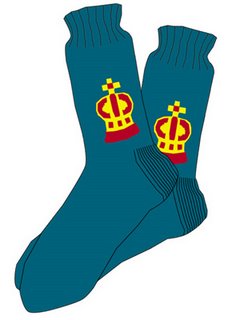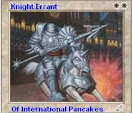From time to time, when I feel like a good laugh, I go to a chessforum and read about what they say about DLM and his system. For years on end they say the same things. Some think it would work miracles IF they would do it, without ever getting the impuls to actually start, others thinks it is worse than useless. What keeps surprising me is that they are content with an OPINION. A sort of opinion-fetishism. What's the use of an opinion? I never need one! Just try it and see for yourself.
Very funny were the posts of a person who claimed that it was impossible to follow the program because it consumes so much time. When I looked at his profile, he had more than 2300 entries posted the past few years!
What everybody seems to agree about, is that you have to have a "balanced approach" to chess. This is the single most heard critic against a heavy tactical study program. There's nobody who can deny a balanced approach.
But you have to see things in the right perspective.
If you know only a few hundred words of a foreign language, and you try to write a novell in it, you can worry about your style of course. But that's rather silly. You first have to adress the most unbalanced part, which is the lack of a good vocabulary of frequently used words.
The same holds true for chess.
But for some reason it seems to be impossible to see how bad you are in tactics. It is a strange blind spot that almost everybody has. Every grandmaster who gives a simul says that we are so bad in tactics. But we stay in blessed ignorance about it.
Not me.
Everyday at CTS I'm stunned.
The problems are SO incredibly simple, if you look objectively to it.
Everybody can solve the problems within minutes.
But WHY on earth does it take me so long?
AFTER I solved a problem I tend to slap my forehead (figuratively spoken) and say "aha! is it so simple?"
But the next problems will cause me trouble again and again.
As long as this is the case, it is simply silly to adress other parts of the game.
Yes, I have to take a balanced approach to chess. Since my play is so gruesome unbalanced, I have to adress the most unbalanced part of my game first: tactics, tactics, tactics.
When you work at CTS, you have to keep in mind what you are after.
As brainscans revealed, the difference between a grandmaster and an experienced amateur lies in the perception of the chessboard during the first few seconds a new position is presented. The grandmaster uses his UNCONSCIOUS working LTM while the amateur sees the position as new. The amateurs had at least 10 years experience. The researchers raised the question "why do grandmasters store their patterns in unconscious motoric memory during study while amateurs don't?"
Which means we are at untrotten territory.
We can predict that if we don't take measures, all our efforts will be in vain.
At our club there are a lot of members who study chess for over 40 years but whose ratinggraphs over the last decade can be represented by a straight horizontal line, slightly tilting downwards. . .
So it is easy to study chess in the wrong way. What is learned by the experienced amateur will be crystalized in the wrong memory. You can actually know for sure that if you follow common advice, you end up like those guys with 40 year experience.
What are the characteristics of the memories that are used by the grandmaster and the experienced amateur? What is their "taste"?
Grandmaster:
- LTM
- Procedural memory (knowledge how to do something)
- Memory where complex motor skills are stored
- Implicit knowledge. You can't formulate it in words.
- Unconscious recall of information
- works on a stimulus - response base.
- It works with tremendous SPEED.
- Storage by fast repetition.
Experienced amateur:
- LTM
- Declarative memory.
- Explicit knowledge. It's possible to formulate it in words.
- Conscious recall of knowledge.
- It works very slow.
- Storage by understanding (the formulating part) and spaced repetition.
Who have benefitted the most of the program?
J'adoube and Celtic Deatch.
The least?
King of the Spill, Mousetrapper, me.
What's the difference between us? It's rather difficult to try to characterize a person thru the small medium that internet is and based on what everybody tells about himself, but if I don't try it I have nothing at all.
So let's see.
What seems to be a common characteristic in the approach of J'adoube and Celtic, is that they both lay their emphasis on speed and #repetitions. If I recall well, Celtic is even the inventor of the "minicircles".
King, Mouse and I are all laying emphasis on understanding. We are all systembuilders. Look at King's famous
Fundamental Checkmates, Mouse'
Target Feature Count and my 'illustrious'
Rake-Time continuum to understand what I mean.
The point with understanding is, is that it's just the beginning. I always thought I was finished when I understand something. But actually then the work (achoo) begins. To transform knowledge into skill. It's difficult to work when you think you are ready. . .
What got me thinking were the following figures:
To get 1 ratingpoint at CTS I have to commit 34 problems to memory, which takes me 570 problems to realize. I mean I have to solve 570 problems at CTS to commit only 34 problems to memory, so my measurments revealed. I asked myself if it wasn't possible to simply concentrate on those 34 problems and try to squeeze them into memory. 34 problems a day must be doable (=400 points in 400 days:)
So now I concentrate on those 34 and I repeat them alot.
At CTS there is a school which focus on succesrate. That is typical for someone who believes in understanding. But since that is only the first part of the job, they tend to forget the transformation into skill. A common mistake under experienced amateurs, as we know. . .:)
The first round at CTS I look upon as a selection of problems. I need all patterns I don't recognize in under 10 seconds. Because that are the problems where I still need understanding to solve them. I work rather fast during this first selection, so my succesrate drops steadily.
Then I copy the session to harddisk and work my "minicircles" untill I can do all problems while conversing with Margriet. Since it is useless to commit wrong patterns to memory, I use the first round after selection for understanding the problems. Since I use this method, my improvement at CTS is steady at about 1 point a day at average. Which is twice the increment I'm used to.




